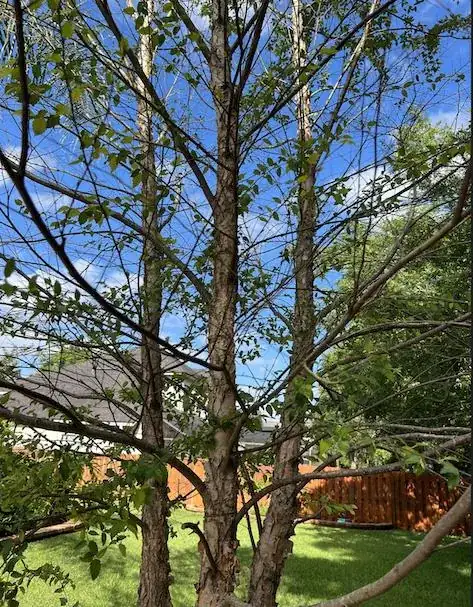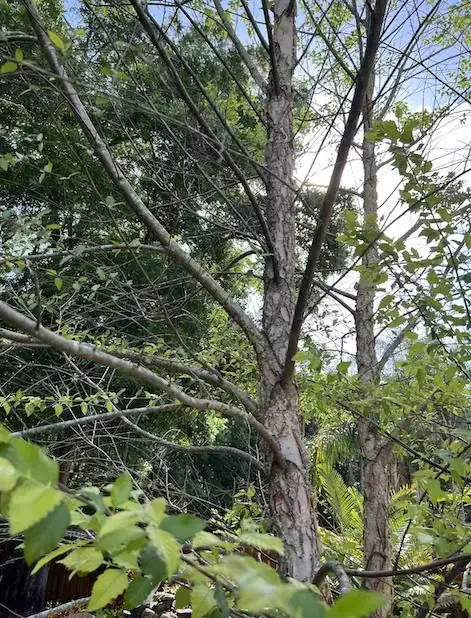I have a group of 3 birch tree's in my backyard, Jacksonville, FL. Last year I noticed that there was a center section, on the entire group, that did not have leaves on the branches. I have River rocks at the base of the trees. This year there are only a few branches at the bottom and a few at the top that have leaves. The bare center section has gotten larger and spread higher up.
Last year when I was watering and noticed there were large air pockets by the roots. So, I pulled back the rocks and added 3 bags of top soil, watered well and replaced the rocks.
I also sprayed for Borer pests, without evidence of their existence. This year it is worse. However, there is new growth at the base of the trunk, on all 3.
1st Picture is 2022, 2nd is 2023.
I have tried to find an Arborist, but not one has returned my call or email.
What can I do to save these trees? Any ideas would be most appreciated. TIA

